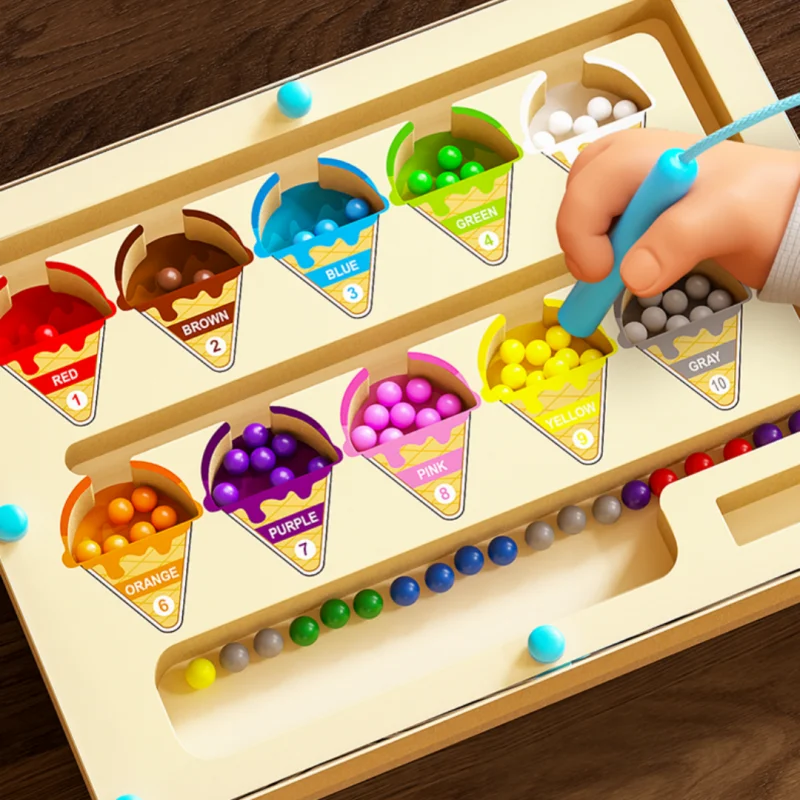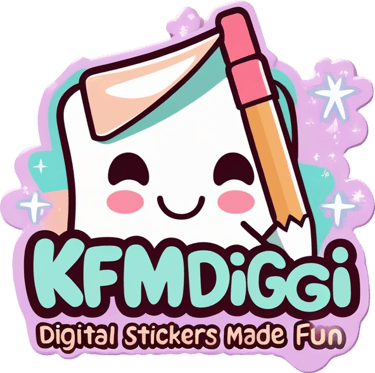Beyond the Surface: Leveraging Stickers for Cognitive Development in Early Childhood
Beyond the Surface: Leveraging Stickers for Cognitive Development in Early Childhood
7/7/20257 min read


Introduction to Cognitive Development in Early Childhood
Cognitive development refers to the progression of thought processes, including memory, problem-solving, and decision-making, that occur in early childhood. This critical phase sets the groundwork for future learning and social interactions, as children begin to understand their environment and how they relate to it. The significance of cognitive development lies in its role in supporting educational outcomes and emotional wellbeing throughout a person's life. As such, early childhood is a period filled with rapid cognitive growth that educators and parents should actively support.
Several theorists have shaped our understanding of cognitive development during this time. One of the most notable figures is Jean Piaget, who proposed that children move through distinct stages of cognitive growth. According to Piaget's theory, children progress from the sensorimotor stage, where they learn through direct interaction with their environment, to the preoperational stage, characterized by symbolic thinking and the use of language. These stages highlight the transformation in a child's ability to think, reason, and understand complex concepts, which gradually unfolds as they engage with their surroundings.
During early childhood, several critical milestones emerge that indicate cognitive development. Children typically learn to recognize and categorize objects, develop language skills, and begin to understand basic mathematical concepts. Social interactions also play a vital role in this development, as children learn from peers and adults. Engaging with their surroundings and using various materials is essential for fostering cognitive capabilities. One creative method to enhance this interaction is through the use of stickers, which can stimulate imaginative play and promote fine motor skills. As we explore the effects of stickers on cognitive development, their potential becomes increasingly clear.
The Role of Play in Cognitive Growth
Play is universally recognized as a pivotal element in the cognitive development of children. Through various forms of play, children explore their environment, experiment with new ideas, and develop skills that are crucial for their intellectual growth. Two predominant types of play can be identified: free play and structured play. Each type plays a unique role in promoting cognitive competencies.
Free play allows children the freedom to engage in imaginative scenarios, facilitating creativity and problem-solving skills. This unstructured approach encourages children to navigate challenges independently, fostering critical thinking as they devise strategies and solutions. For instance, a child building a fort with pillows may explore concepts of balance and gravity while simultaneously engaging in cooperative play with peers, enhancing their social interactions and communication abilities.
On the other hand, structured play involves organized activities with specific goals and rules, such as board games or team sports. These activities often promote cognitive skills such as logical reasoning and strategic planning. By engaging in structured play, children learn to follow directions, understand consequences, and work collaboratively, all of which are crucial for effective language development and interpersonal skills.
Incorporating stickers into playtime can further enrich these experiences. Stickers can serve as dynamic tools that stimulate creativity and cognitive engagement. For example, children can use stickers during free play to create narratives or characters, thereby enhancing their storytelling abilities. Additionally, during structured play, stickers can be used as rewards for completing tasks, reinforcing achievement and encouraging goal-oriented behavior. As such, using stickers as a playful medium not only makes learning enjoyable but also significantly contributes to cognitive development.
Stickers: More Than Just Decorative Items
Stickers have long been perceived primarily as decorative items, appealing to children with vibrant colors and playful designs. However, their potential extends far beyond mere aesthetics. In educational settings, stickers can serve as valuable tools for cognitive development, supporting various learning activities and enhancing engagement among young learners. The versatility of stickers is evident in their diverse types, which include educational stickers, puffy stickers, and even glow-in-the-dark variants. Each type offers unique opportunities for children to explore their creativity and enhance their learning experiences.
One prominent educational use of stickers is their role in creating visual aids. Teachers and parents can utilize stickers to illustrate concepts such as numbers, letters, shapes, and colors. For instance, placing stickers on a chart can help children associate images with corresponding words or concepts, fostering an understanding that translates into verbal language skills. This visual reinforcement not only captures attention but also aids memory retention, benefiting early literacy development.
Moreover, stickers can facilitate storytelling activities, encouraging imaginative play and narrative skills. By using themed stickers, children can create scenes and characters, transforming a simple sticker into a catalyst for creative storytelling. This practice promotes cognitive skills such as sequencing and comprehension, as children learn to organize their thoughts and relate ideas in a coherent manner. Additionally, stickers can be employed to help children categorize objects, enhancing their analytical skills. For example, sorting stickers by various criteria—such as size, shape, or color—promotes critical thinking and classification skills essential for cognitive growth.
In essence, stickers represent an engaging medium through which educational content can be delivered, allowing children to learn while having fun. Their application in various educational contexts highlights the importance of integrating playful elements into learning strategies, effectively supporting cognitive development in early childhood.
Engagement and Motor Skills Development with Stickers
Stickers, often considered a playful accessory, serve as a valuable tool in fostering fine motor skills among young children. The act of peeling, placing, and arranging stickers engages various muscle groups in the fingers and hands, which is essential for the development of dexterity. Each sticker interaction requires a child to exert control and precision, making it an effective activity for enhancing hand-eye coordination. The repetitive motions involved in sticker play can significantly boost a child's confidence in their motor abilities, laying a strong foundation for future tasks that require fine motor skills.
In addition to physical skills, the cognitive engagement that comes with sticker manipulation cannot be overlooked. As children select stickers and decide where to place them, they are essentially engaging in problem-solving and decision-making processes. This not only stimulates their creativity but also enhances critical thinking as they evaluate the best placement for each sticker to achieve their desired outcome. The choices they make during this creative process encourage them to think abstractly about design, balance, and composition.
Furthermore, sticker activities can be integrated into various educational themes and subjects. For example, educators can encourage children to use stickers to depict scenes from a story, which can deepen their understanding of narrative structure. This enhances their vocabulary as they discuss their creations and provides opportunities for storytelling, thus intertwining cognitive development with motor engagement. In essence, the use of stickers transcends mere play; they are instrumental in developing both fine motor skills and cognitive engagement in young children, creating a multi-faceted learning experience.
Integrating Stickers into Learning Activities
Incorporating stickers into learning activities can significantly enhance cognitive development in young children. Stickers are not merely decorative; they serve as engaging tools that can transform mundane tasks into exciting, interactive experiences. By utilizing stickers in various educational contexts, parents and educators can foster creativity, critical thinking, and numerous learning skills.
One effective way to use stickers is in story creation. Children can be encouraged to write short narratives where they incorporate stickers as pivotal elements of the storyline. For example, after selecting stickers featuring various characters or items, children can craft a story around them, outlining the journey and interactions. This task enhances their language skills and imagination while providing a platform for them to express their ideas freely.
Additionally, stickers are invaluable in introducing math concepts. Parents can use stickers to teach counting and basic arithmetic. For instance, placing five apple stickers on a chart can prompt children to count them aloud. Parents can further enhance this activity by asking, "What happens if we add two more stickers?" Such interactive exercises help solidify foundational math skills through visual aids and hands-on participation.
Art projects provide another exciting opportunity for sticker integration. Whether through creating collages or decorative cards, stickers can become essential components of a child's artwork. Educators can encourage children to think critically about the colors, shapes, and themes of the stickers they choose, stimulating discussions about art and enhancing their aesthetic appreciation.
Incorporating stickers into these learning activities makes them more interactive and enjoyable, laying a foundation for cognitive growth. By taking advantage of stickers' versatility, parents and educators can create a stimulating atmosphere where learning is both fun and effective.
Promoting Emotional and Social Skills Through Sharing Stickers
Stickers, often regarded as mere playthings, possess profound potential in fostering emotional and social skills among children. In group settings, the opportunity to share stickers can teach fundamental lessons about generosity, turn-taking, and effective communication. When children engage in sticker-sharing activities, they learn to navigate social interactions that are crucial for their cognitive development.
Sharing stickers promotes the concept of generosity as children willingly give their stickers to peers. This act of giving enhances their understanding of social norms and fosters a sense of community. As early childhood educators facilitate sticker-sharing exercises, children learn the value of considering others' feelings and preferences, cultivating empathy. The joy of receiving a sticker shared by a friend strengthens social bonds, reinforcing the significance of generosity in building relationships.
Moreover, the act of turn-taking while sharing stickers naturally introduces children to essential social concepts. Children become accustomed to waiting for their turn, which nurtures patience and self-regulation. This engagement also encourages children to articulate their needs and preferences, thereby enhancing their communication skills. As they express excitement or disappointment regarding sticker choices, they practice verbalizing emotions and understanding their peers' reactions. Vehicles of expression such as stickers allow children to externalize their feelings in a fun and meaningful context.
In essence, sharing stickers serves as a practical platform for developing emotional and social competencies. As children learn to engage with peers in these controlled environments, they acquire skills that are integral to their overall cognitive growth. The integration of sticker activities into early childhood settings demonstrates how simple resources can effectively cultivate essential emotional intelligence and interpersonal skills, paving the way for holistic development.
Conclusion
Throughout this discussion, we have explored the multifaceted role that stickers play in cognitive development during early childhood. Stickers can serve not just as decorative elements but as powerful educational tools that foster learning in various domains. We have examined how the simple action of peeling, placing, and organizing stickers can stimulate fine motor skills, enhance spatial awareness, and promote creativity and cognitive flexibility among young children. The interactive nature of stickers encourages engagement, making learning both fun and effective.
Additionally, the social aspect of sticker activities cannot be overlooked. Collaborating with peers or adults while using stickers fosters communication skills and enhances social interactions. Furthermore, incorporating stickers into structured learning environments or creative play can reinforce concepts taught in various subjects, from art to mathematics. Therefore, it is crucial for parents and educators to embrace stickers not merely as toys but as valuable educational resources.
